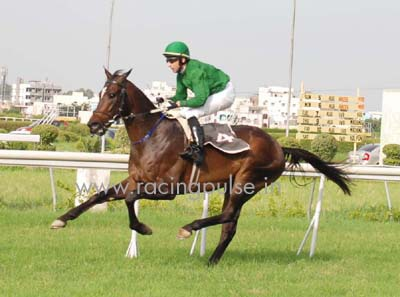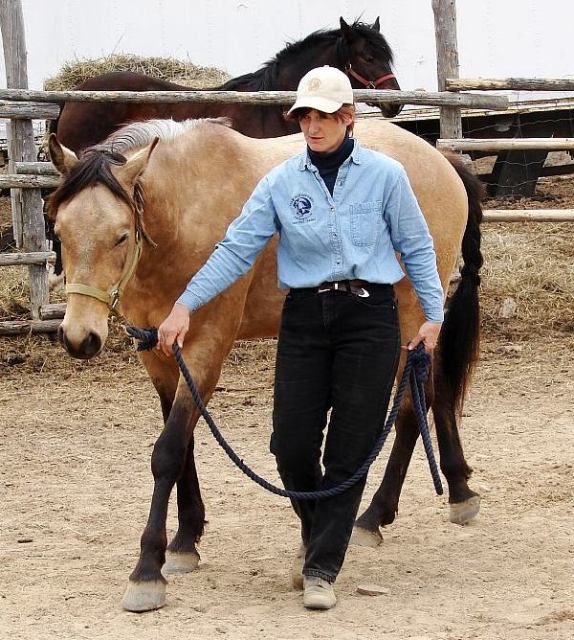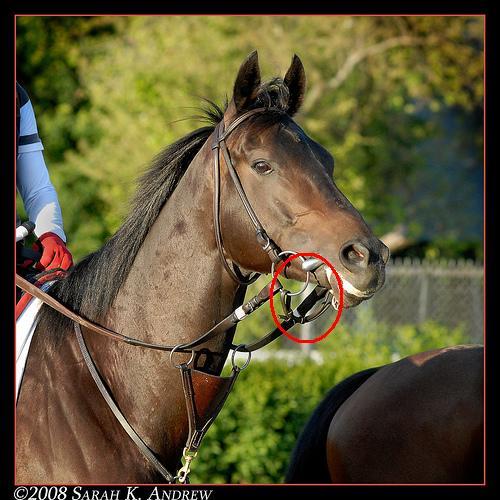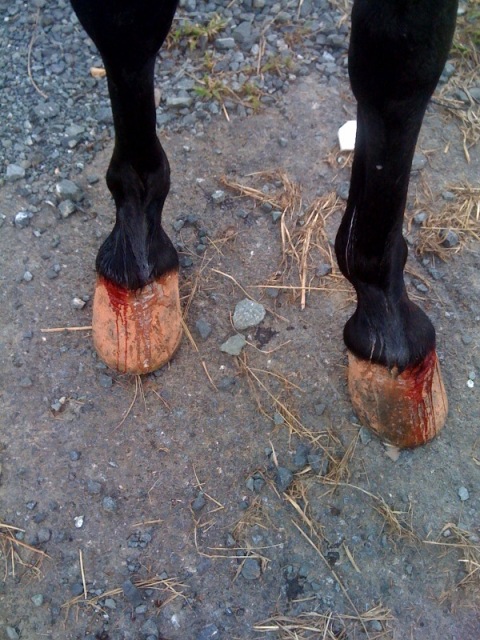QuestionQUESTION: My heel horses doesn't have a solid stop. What training can I use to improve his stop. Thanks.
ANSWER: Hi Allen!
A good stop comes from collection! Getting the back really round and the hocks well under the body is a must. I like backing lots of circles to the left and right and backing in a figure 8. Make sure your back comes from maximum softness. When they are so soft in the face that they can't get any softer, it becomes a back up, this is the basis of a really great stop. Also, lots and lots of transitions. Get into the habit of always teetering back, backing a few steps and shifting the weight back at every opportunity. Be very careful that your are not pulling your horse to a stop. Heavy hands make for a rough stop on the forehand. If you really want to refine your stop, work in the round pen, half hitch your reins over your horn and work on rubbing your horse to a stop. You can exhale, humm, say whoa (soft and low), as you rub your horse. This may take a bit depending on your feel and timing but pretty soon it will develop to the point that sitting deep in the saddle will get them to sit right down. I know this is really bucking a trend, but to really get this going on good for you, take off your tie down. If you can get your horse going really relaxed, free and soft you will get the stops you are looking for. Give it a try!
Denise
Just an add here Allen...get things really right slow first before you ever try it fast. If it is not working slow it will never come together fast. There is a concept here also of riding the whole horse. You are not just working on the stop because the stop is dependent on so many other things. Basic obedience, true unity and an excellent awareness of where the feet are and what they are doing will all aide in your success. Happy roping! Denise
---------- FOLLOW-UP ----------
QUESTION: Hi Denise
After thinking about your answer, I have two followup questions. First, where do I rub? Second, since it's not typical to be able to sit deep in the saddle when delivering the heel loop, is there a signal to make it easier to stop?
Thanks.
Allen
AnswerHi Allen!
You can reach up and rub him on the neck, or just rest your hand on his withers or rub him soft on the rump, where ever you can offer a little support and comfort to get him to relax. What we are going for here is a totally relaxed and confident horse. Imagine how good this will be if your horse could walk into the box and not be hyped and amped to the point that he runs past the steer and neglects the stop, but strong, cool, collected and ready to pound out a top shelf performance. We want performance horses to be at the top of their game. With so much nervous energy, some of the best goes are won or lost right in the start box.
A relaxed horse is a focused horse. Relaxed is very different than lazy. I would want a rope horse that has the attitude of total confidence, that could walk into the box flat footed, stand relaxed, and then explode out, do his job and then be ready to chill again. This is a large part of why you are working in the round pen with no reins. If your horse can really feel what you want him to do, if your feet were his feet and you were both on the same page, imagine how good things will work out for you. You THINK stop and your horse stops. This is the goal. You fix things up and allow your horse to find the answer. Getting your horse to really understand what you want him to do is the way to peak performance.
So, start by sitting down. I know you are standing in your stirrups when you deliver your shot, but when your loop is away, your weight will shift back. When you catch, you have to be sitting in the saddle and your weight has to be back if you don't want to become a lawn dart. It is this shift in weight that we want your horse to start looking for. The reason for sitting now, it that it will make it kindergarten clear for your horse. This is also why I would have you add a soft, low whoa, or a hum as an added cue that he needs to be thinking "stop". Start by making everything crystal clear. Get round, collected, soft and develop really correct stops using your body ie: sitting down to assist your horse in really learning this slow and solid. Then you can modify and make adjustments based on what you need fast. Remember your body has to stay in balance with your horse to get a good stop. If your weight and momentum is going forward and you are out over your horses withers and front end, it is going to next to impossible for him to stop. It is your responsibility to get out of his way long enough for him to do his job. He can't stop correct if you are not working as a team.
Ropers have a lot to remember and do when team roping. However, the horsemanship has to come first or you will never be able to get the shot you want. Keep your body frame correct and out of your horses way. Use a bit more of a half seat and get in time with your horse and HIS feet so you are working together. Use your body to help him stop. When we are riding, be it jumping, cutting, roping, reining, we are either in the way or out of the way. Work on riding the rhythm of the horse and being an instinctual rider. You will FEEL when you can get forward, take your shot and then get back and get out of the way to set the shot and stop.
Before you add speed, take this little test: can you rub your horse to a stop? Can you stop, with quality, without touching the reins. Can you back him up using only a shift in weight in your body. If you can get this done, it is time to start adding a little more go to the game plan. If your horse needs a little more help with these skills, help him. Just keep fixing so he finds the answer. On the back up, shift your weight back, wait for a second, if if doesn't understand, use your reins to help him back, but the second he tries to back release the pressure on the reins. Keep up this pattern until he is following the shift of weight.
So, slow and correct then speed things up and stay out of the way. Let me know how things are going. I know this may take some time, but it will be worth it!
Denise

 horse having longer stride
Question
longer stride
hello maam, this horse na
horse having longer stride
Question
longer stride
hello maam, this horse na
 Arabian Mare
QuestionI have had a large dog coming onto my property
Arabian Mare
QuestionI have had a large dog coming onto my property
 chin straps for horses
Question
chin strap
hello sir, what is the use of chin
chin straps for horses
Question
chin strap
hello sir, what is the use of chin
 K K snaffle
Question
K K snaffle
hello, what are K K snaffles? is i
K K snaffle
Question
K K snaffle
hello, what are K K snaffles? is i
 bleeding
Questionbleeding
QUESTION: hi D! I have attached
bleeding
Questionbleeding
QUESTION: hi D! I have attached